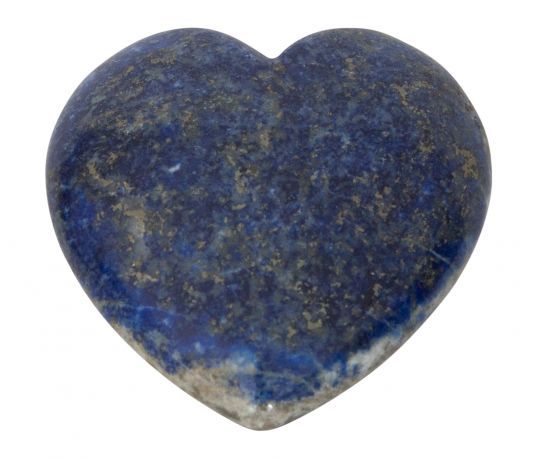We use cookies to make your experience better.
40mm Lapis Lazuli heart XL from Afghanistan, heart that is cut entirely by hand.
- Buy 10 for €5.50 each and save 8%
- Buy 50 for €4.99 each and save 17%
The heart is a very old symbol of love used by everyone around the world. Traditionally, the heart has been chosen in several cultures as the seat of love and feeling. It is not entirely clear why the heart was chosen as a love symbol. Perhaps because the heart is automatically related to the (feeling) life and without the heart (read love) no life is possible. The heartbeat is partly influenced by feelings; so our hearts beat faster when in love. The heart likes to be loved. The heart needs love. It has even been claimed that love extends life expectancy, while loneliness is counterproductive. Everyone knows the phrase, "He died of a broken heart."
Lapis lazuli or azure stone is an opaque semi-precious stone with an intense azure blue color. It is not a mineral but a rock, because it consists of more than one component. It is mainly mined in Afghanistan. The main component of lapis lazuli is lazurite (25% to 40%), a feldspar substitute with the chemical formula (Na, Ca) 8 (AlSiO4) 6 (S, SO4, Cl) 1-2. [1] Other important components are: calcite (white), sodalite (blue) and pyrite (yellow - metallic shiny). Furthermore, the minerals augite, diopside, enstatite, micas, hauynite, hornblende, geyerite (a sulfur-rich variety of lollinite) and nosane can also occur in lapis lazuli. Lapis lazuli is not particularly hard for a gemstone. On the Mohs scale, the hardness is 5.5, meaning the stone can be easily scratched by harder gemstones. It is therefore not wise to store lapis lazuli jewelery together with harder gemstones. Lapis lazuli is given spiritual power by alternative healers. Lapis lazuli is usually created by contact metamorphosis in crystalline marble. Lapis lazuli has been known since ancient times. In the city of Ur as early as 4000 BC. in acted. It was one of the trading products of the trade between Sumer, Dilmun and Meluhha. It was also very popular in ancient Egypt. For example, it was used for Tutankhamun's death mask. It was in such demand throughout the Middle East that it was in demand as early as the 13th century BC. imitations were made. From the city of Sidon, for example, there are known roll seals of King Annipi and his father Adummu, which are given a dark blue color with the help of cobalt salts. Lapis lazuli was also used in ground form as a blue dye (ultramarine), which was also very popular in Renaissance painting.












